Parse the sound of a dial-up modem
Hello, Habr.Somehow accidentally remembering about the modem Internet and about the “same” connection sound, I thought about what was inside there.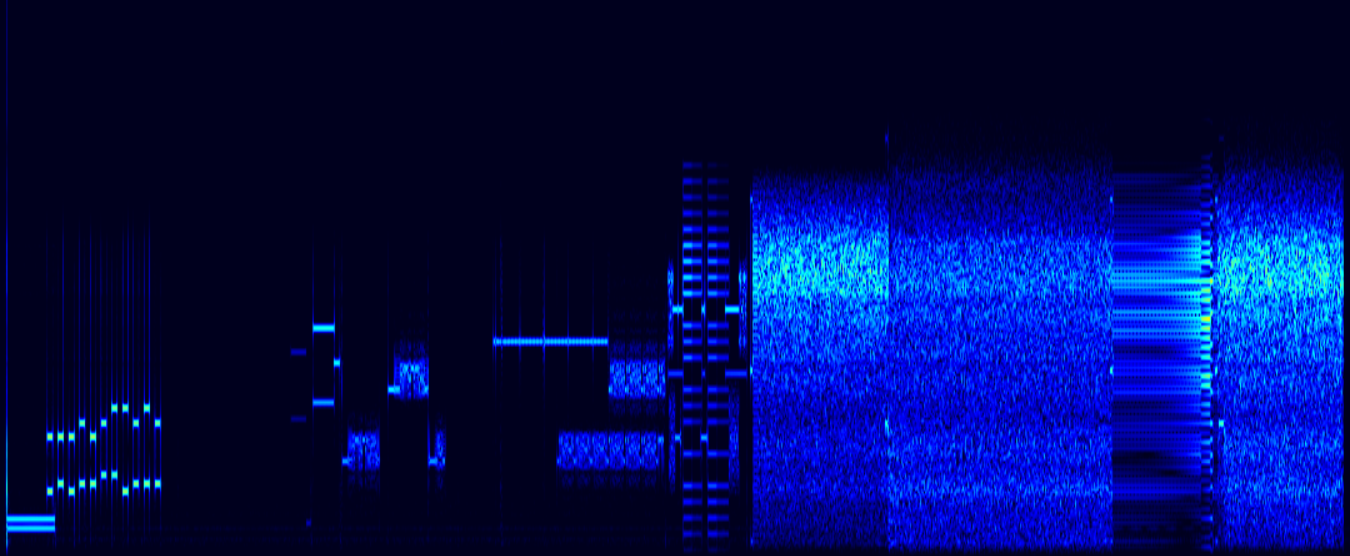 I found the sound of a modem in WAV and Signals Analyzer on the network. Let's try to figure it out.Of course, I am not the first to reflect on this issue for many years. As a Google search showed, a Finnish engineer described the phases of a modem connection back in 2012 . But for those who do not regularly read blogs in Finnish, it is probably not a sin to describe it again, having studied the spectrum in more detail.
I found the sound of a modem in WAV and Signals Analyzer on the network. Let's try to figure it out.Of course, I am not the first to reflect on this issue for many years. As a Google search showed, a Finnish engineer described the phases of a modem connection back in 2012 . But for those who do not regularly read blogs in Finnish, it is probably not a sin to describe it again, having studied the spectrum in more detail.Introduction
A small digression for the “Next generation”, who did not find those times: the modem was such a magic box that plugs, if the memory does not change, into the COM port (there was no USB yet) and transfers data through a regular telephone line in the “voice” range . Accordingly, the connection to the Internet (and even earlier it was FIDO or BBS) was preceded by such a funny squeak, the whole process can be seen, for example, here .Modems evolved from the very ancient, working through the handset at a speed of 300bps, to the most sophisticated, giving theoretically up to 56Kbps, the telephone line channel no longer allowed.A couple of pictures under the spoiler, , «» :
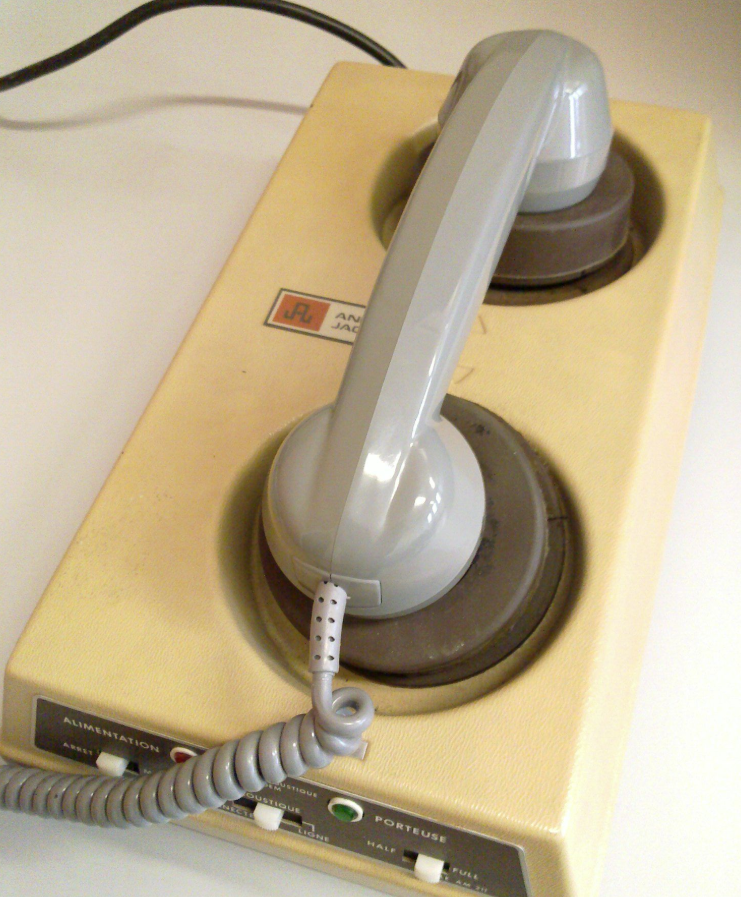
, -, , , . , , .
56:
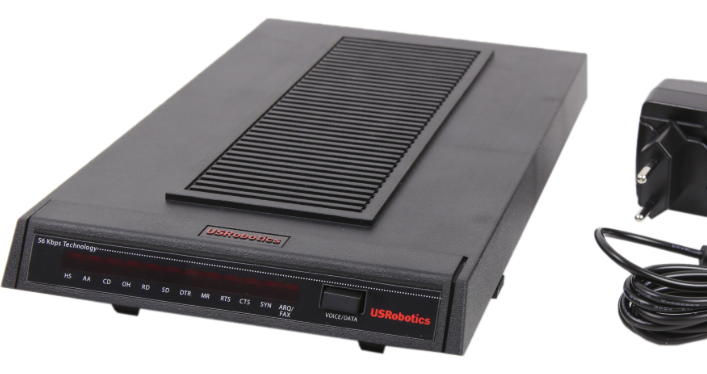
Another interesting point - judging by Amazon, US Robotics Courier 56K Business modems are sold now , and it’s very expensive. Why I don’t know, there are probably places where there is still no other type of connection.We will end this with the introduction, and move on to the signal.Connect
The first interesting point is when we hear (or rather heard) the sound of the modem, in fact, we hear not one modem, but two at once - our modem, and the provider's modem. The signals of the calling modem are circled in red in the picture: Now let's see what types of modulation we can meet in this signal.1. Tone Dialing (DTMF)The leftmost part of the picture, there is nothing unusual here, the usual tone dialing, which was also used in ordinary phones (someone probably remembers the Tone-Pulse toggle button on the wired phone case).
Now let's see what types of modulation we can meet in this signal.1. Tone Dialing (DTMF)The leftmost part of the picture, there is nothing unusual here, the usual tone dialing, which was also used in ordinary phones (someone probably remembers the Tone-Pulse toggle button on the wired phone case).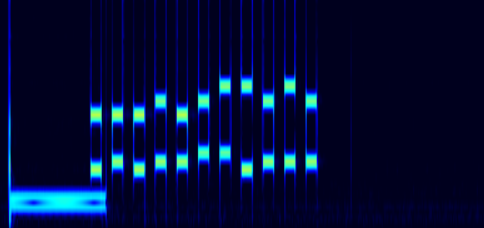 By the way, I had an even older PBX with pulse dialing, so there were no such sounds, as well as a 56K connection.2. ConnectionThe provider’s modem, after receiving a call, “picks up the phone” and sends a couple of tones to the line, “our” modem answers with a tone of a different frequency and sends information about the available protocols to the line:
By the way, I had an even older PBX with pulse dialing, so there were no such sounds, as well as a 56K connection.2. ConnectionThe provider’s modem, after receiving a call, “picks up the phone” and sends a couple of tones to the line, “our” modem answers with a tone of a different frequency and sends information about the available protocols to the line: As you can see, FSK is used here - frequency modulation, where the binary code is transmitted from using alternating two tones. The transfer rate is only 300bit / s.The provider's modem answers in the same mode, confirming the reception.The connection is completed by transmitting a sufficiently long tone with low-frequency amplitude modulation.
As you can see, FSK is used here - frequency modulation, where the binary code is transmitted from using alternating two tones. The transfer rate is only 300bit / s.The provider's modem answers in the same mode, confirming the reception.The connection is completed by transmitting a sufficiently long tone with low-frequency amplitude modulation. It is interesting that if you look in more detail, you can see that in the places of the “joints” the tone phase also changes:
It is interesting that if you look in more detail, you can see that in the places of the “joints” the tone phase also changes: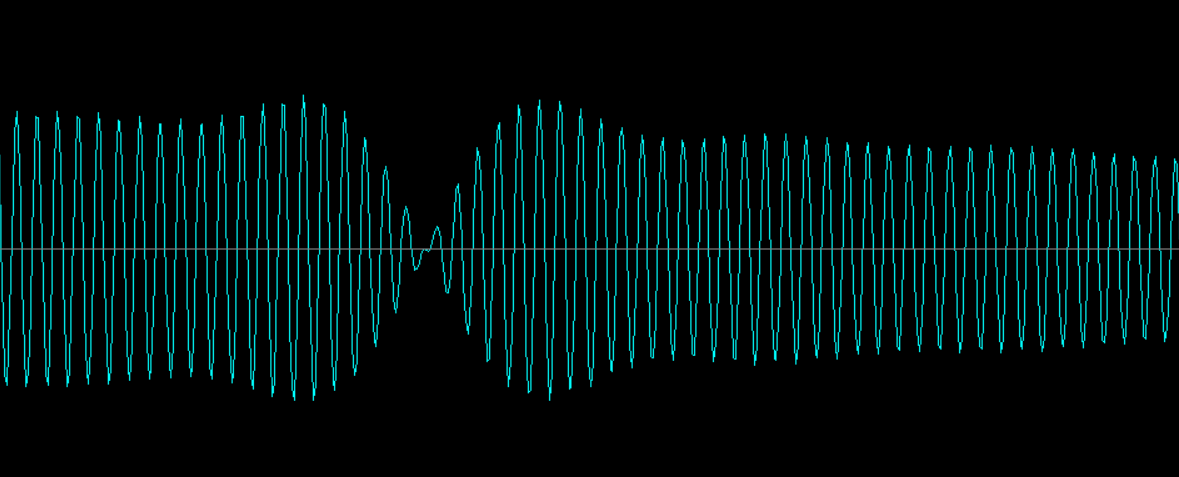 Why it is done is difficult to say.3. Exchange "advanced settings"I put the name in quotation marks, because I don’t know for sure, but I can only guess. Here the modems exchange various information about the available protocols:
Why it is done is difficult to say.3. Exchange "advanced settings"I put the name in quotation marks, because I don’t know for sure, but I can only guess. Here the modems exchange various information about the available protocols: On the left is the amplitude-modulated signal already described above, then the signal already familiar to us from FSK. But with the edge on the right - another type of modulation. The picture shows that it is not the frequency and amplitude that is changing, but the phase of the signal (PSK, Phase Shift Keying):
On the left is the amplitude-modulated signal already described above, then the signal already familiar to us from FSK. But with the edge on the right - another type of modulation. The picture shows that it is not the frequency and amplitude that is changing, but the phase of the signal (PSK, Phase Shift Keying):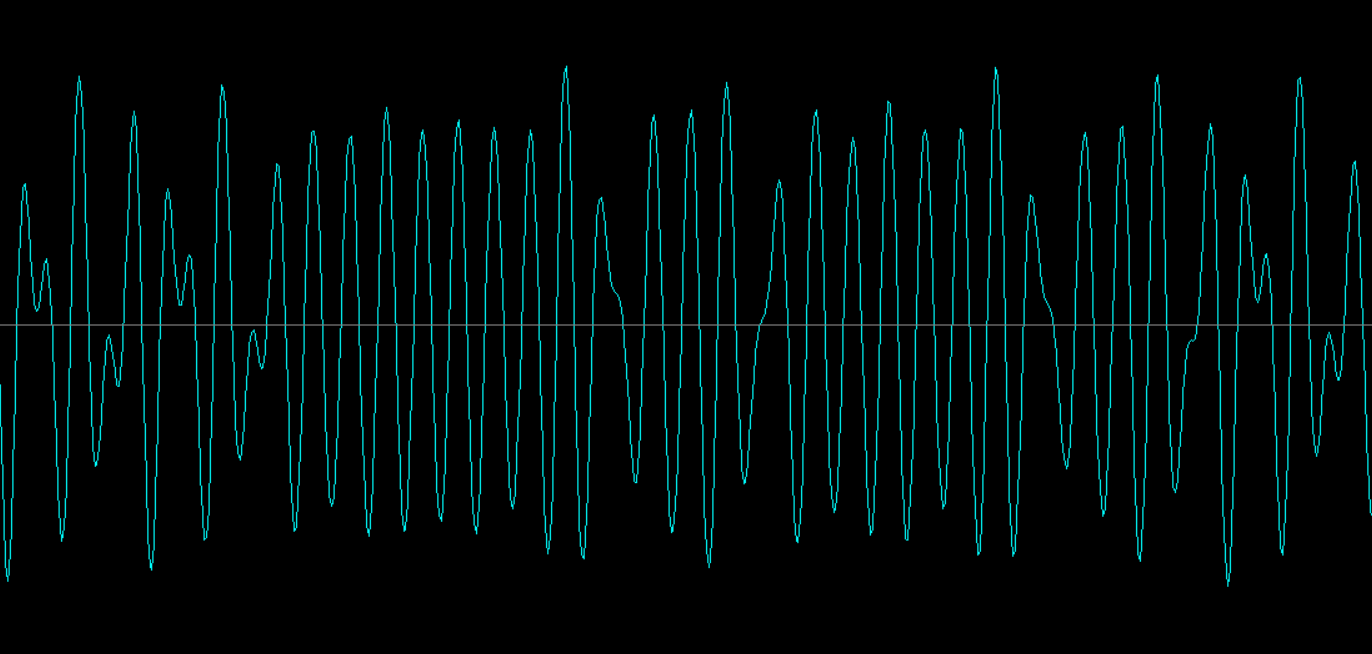 The signal length is only 0.15s.4. Line checkHere both modems send a broadband (to all available 3.7KHz :) signal with a duration of ~ 0.4s, the result is sent to another modem.
The signal length is only 0.15s.4. Line checkHere both modems send a broadband (to all available 3.7KHz :) signal with a duration of ~ 0.4s, the result is sent to another modem.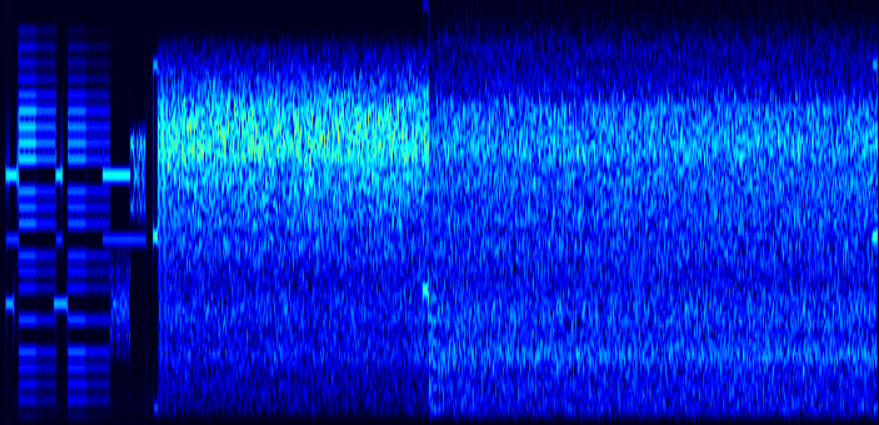 At the end, the modem transmits a separate signal to adjust the equalizer and suppress the echo in the line.Next, the speaker turns off, and higher-level procedures are performed - checking the login / password, and if everything is fine, the user connects to the Network.
At the end, the modem transmits a separate signal to adjust the equalizer and suppress the echo in the line.Next, the speaker turns off, and higher-level procedures are performed - checking the login / password, and if everything is fine, the user connects to the Network.Conclusion
As you can see, quite a lot of everything is embedded in the sound of the modem, and when parsing the question arose, but in fact, why is it so complicated? Why alternate between different types of modulation to just exchange data?The answer is probably simple - legacy. Each new modem should not only work as fast as possible and support the latest protocols, but also be able to connect to older models. Therefore, at the very beginning, modems are connected at a minimum speed of 300 baud and exchange protocol information, “advanced settings” are transmitted by another type of modulation, which the old modem will ignore, and new modems can use.Of course, I did not set out to parse every bit in the signal, the above is only general information. Those wishing to study the topic in more detail can be sent to the 2012 article(in English) or to the description of ITU standards , but for the first acquaintance I think there is enough information.PS: Under the spoiler, the sound of a modem with a time layout: Source: https://habr.com/ru/post/undefined/
All Articles